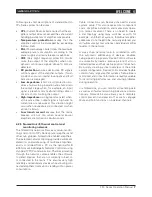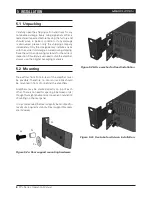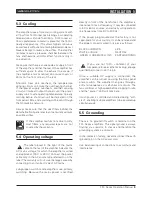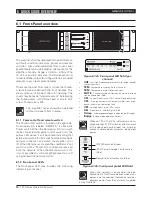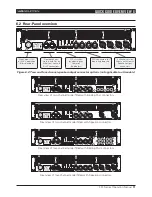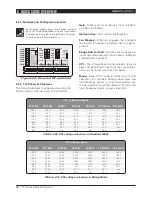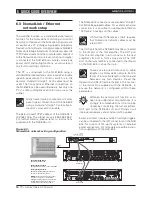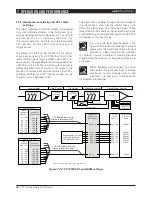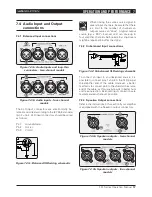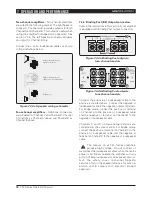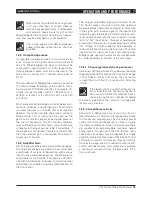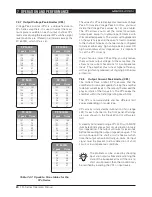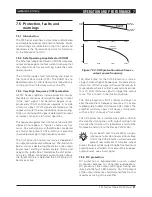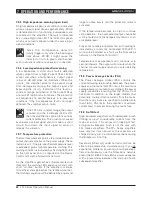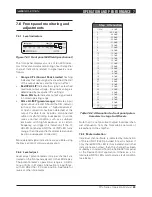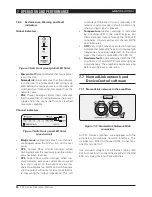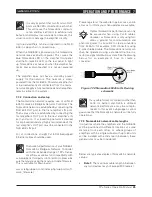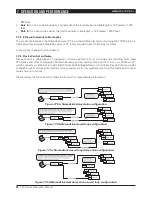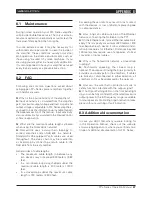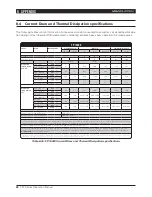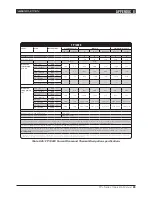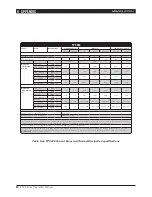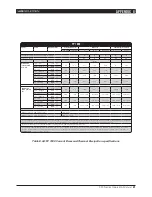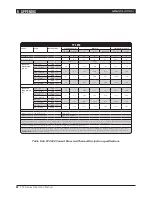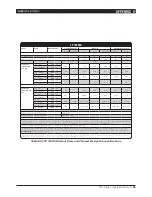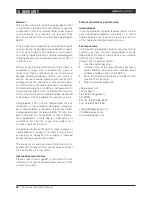
FP+ Series Operation Manual
21
7.5 Protection, faults and
warnings
7.5.1 Introduction
The FP+ Series amplifiers incorporate a sophisticated
and comprehensive set of protection features. Faults
and warnings are indicated on the front panel and
reported via the NomadLink network for indication
on the DeviceControl GUI.
7.5.2 Safe Operating Area detector (SOAd)
The Safe Operating Area Detector (SOAD) compares
output voltage against output current to ensure that
the output transistors are working inside their safe
operating area.
The SOAD provides fault monitoring and input to
the Current Peak Limiter (CPL). The SOAD has no
dedicated indicator, and its operation is revealed only
in conjunction with features such as the CPL.
7.5.3 Very high frequency (Vhf) protection
All FP+ Series amplifiers include protection circuits
that detect continuous Very High Frequency content
in the input signal. The detection begins at ap-
proximately 10 kHz and moves upwards to include
ultrasonic signal. If VHF signals are detected, the
output will mute for 6 seconds before re-measuring.
Once no continuing VHF signal is detected, the output
un-mutes and returns to normal operation.
This feature recognizes that continuous full-scale VHF
signals do not appear in “natural” sources such as
music. Any such signals can therefore be considered
as a fault when present. VHF protection is essential
in avoiding damage to high frequency drivers.
The VHF protection operational area is dependent
on output power level and frequency. The illustration
below shows a decreasing threshold on the output
power level, starting at approximately 10 kHz and
rising with a -6 dB slope. This defines the VHF protec-
tion area. When continuous output power above
the threshold line is detected the VHF protection
becomes active.
20 Hz
10 kHz
20 kHz
30 kHz
- 6 dB slope
VHF protection
operation area
Max. Peak
output power
Max. Continous
output power
Output
power
Attack time
VHF protection
Slow
Fast
20 Hz
10 kHz
20 kHz
30 kHz
Figure 7.5.3: VHF protection attack time vs
output power/frequency
The Attack time for the VHF protection is increa-
singly shorter at higher frequencies. For example, an
ultrasonic continuous signal will cause the outputs to
mute rapidly, where it will take several milliseconds
for a 10 kHz continuous signal to trigger the output
mute. This is shown in the illustration above.
The VHF protection is NOT a limiter and does not
alter the amplifier’s frequency response. It is imple-
mented solely to detect continuous VHF content. The
amplifier will always pass VHF peaks at full power,
with no effect on musical “transients”.
The VHF protection is indicated by a yellow LED on
the amplifier front panel, with output muting for 6
seconds when in action. It is reported as a fault via the
NomadLink network on the DeviceControl GUI.
If you bench test the amplifier using a
continuous, full scale sine-wave input above
10 kHz, the VHF protection will activate and
prevent measurement of full peak output
power. (Output will be muted long before maximum
output power is attained.) To measure the true peak
output power, use a burst signal.
7.5.4 dC protection
DC protection is implemented on each output
to prevent damage to connected loudspeakers.
DC present at the output will trigger muting and
illuminate the fault LED indicator. Any DC present
at the output indicates a hardware malfunction that
requires servicing of the amplifier.
OPERATION AND PERFORMANCE 7

